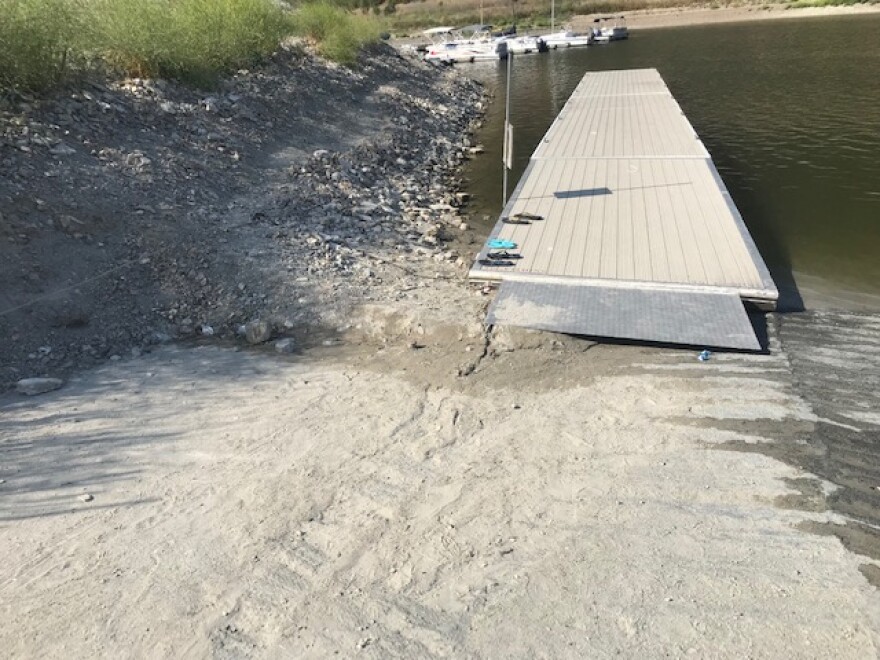California Gov. Gavin Newsom today unveiled a broad strategy for bolstering the state’s water supply that includes targets to recycle more water, expand reservoir storage and collect more data on the amounts farmers use.
Newsom warned that new strategies are essential because California’s water supply will shrink by 10% as climate change brings warmer, drier conditions throughout the state.
The plan, however, has limited details, distant deadlines and does not include a water conservation mandate.
It also does not include measures to substantially address water use by agriculture, which uses about four times more water in California than people in urban areas use.
Included in the plan are possible grants to fallow fields and programs to collect timely data on how much surface water growers use. It also floats the possibility of regulations to curtail growers’ pumping from rivers and streams beyond drought emergencies.
The new report mentions that the state’s administration of a complex and archaic water rights system — entrenched since the Gold Rush — needs changes. ”That is something (Newsom) will lean into,” Anthony York, a spokesperson for the governor, told CalMatters. “That’s a huge deal for ag.”
Despite an ongoing drought that grips the state, the governor’s strategies will not increase the amounts of water available to urban areas and farms in the near future: For instance, it sets a 2030 target for recycling 800,000 acre-feet of water by 2030 — an 8% increase from the amount recycled in 2020. The 2040 target climbs to 1.8 million acre-feet.
The drought “is not a short-term situation. It’s the new reality. And we cannot conserve our way out of this given how our climate has changed,” York said.
In the 19-page document released today, the Newsom administration outlined efforts that include bolstering recycled water supplies and storage capacity, both in reservoirs and groundwater. Included are:

- Increasing desalination of brackish water by 28,000 acre-feet per year by 2030 and 84,000 acre-feet per year by 2040. An acre foot of water can serve on average three Southern California households for a year.
- Expanding reservoir and groundwater storage capacity by about 4 million acre-feet — through more groundwater recharge, stormwater capture, completing storage projects and expanding or rehabilitating existing reservoirs and dams.
- Finalizing water efficiency standards for houses and businesses called for by 2018 “in ways that make sense in each region.”
- Considering rules or other ways to “streamline and modernize the water right system, clarify senior water rights, and establish more equitable fees.”
A key theme of the strategy is expediting permitting for a range of projects, including groundwater recharge and desalination. At the briefing, Newsom bemoaned what he called the “regulatory thickets” slowing these efforts, and pledged to work with the Legislature in its last weeks of session to “help us fast track these projects.”
“The time to get these damn projects is ridiculous. It’s absurd. It’s reasonably comedic,” Newsom said.
Newsom recently moved to streamline permitting for renewable energy projects, a contentious effort that lawmakers called “rushed” and “lousy.”
The report also touted the state’s controversial tunnel proposal to replumb the Sacramento-San Joaquin Delta and pump more water south. Antioch Mayor Lamar Thorpe criticized the tunnel plan during remarks today with Newsom, although he voiced support for the rest of the administration’s water strategy.
Asked during the briefing about often-heard, far-fetched ideas such as container ships ferrying water from Canada and the Pacific Northwest, Newsom answered, “I assure you, we have some more novel ones…that are more interesting. But that’s for later.”
The strategies released today were already “identified broadly” in the state’s Water Resilience Portfolio, a news release says, “but they will now be expedited given the urgency of climate driven changes.”
Peter Gleick, co-founder and senior fellow at The Pacific Institute, a global water think-tank, applauded the announcement, but noted its limitations.
“Many of the things in this strategy are important, many of these things need to be done. All of them need to be done faster. And there’s some gaps,” Gleick said. “There’s very little in here for agriculture … a hard challenge, because there are fewer knobs and levers that the state can turn and twist here.”
For urban users, Newsom has not followed in the footsteps of former Gov. Jerry Brown, who imposed a statewide conservation mandate. Newsom has thus far preferred to leave the details to local water agencies in what he has called a “mandate of local mandates.”

Newsom said today’s that his voluntary approach came out of a comprehensive analysis of lessons learned from the last drought. “One of the principal recommendations in that report was do not impose one-size-fits-all,” Newsom said. He said he has met twice with water agency leaders to tell them, “You’ve got to step up your conservation efforts, or we will impose these statewide mandates.”
But water use has not substantially declined under his voluntary measures. Urban usage dropped by about 7.6% in June compared to two years ago, but only 2.7% since last July compared to the same stretch in 2020.
Newsom tours construction at the Antioch Brackish Water Desalination Project on Aug. 11, 2022. Photo by Martin do Nascimento, CalMatters
Today’s press conference, with a backdrop of a brackish-water desalination plant in Antioch that is under construction, comes on the heels of a poll revealing that more than two-thirds of Californian adults surveyed said that state and local governments must do more to combat the current drought.
Newsom’s announcement also follows a high-profile resignation of a California water official who lambasted the administration for “nearly eviscerat(ing)” the state water board’s “ability to tackle big challenges.”
Newsom called on the Legislature, in its last weeks of session, to “streamline processes so projects can be planned, permitted and built more quickly, while protecting the environment.”


